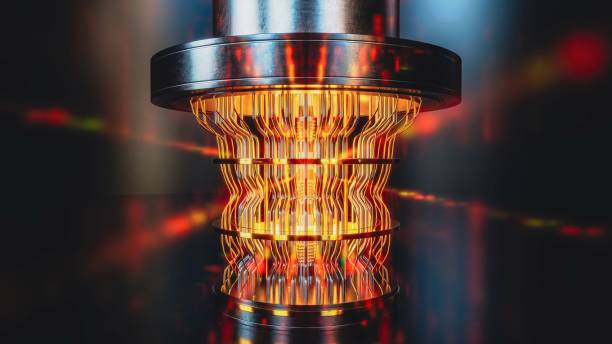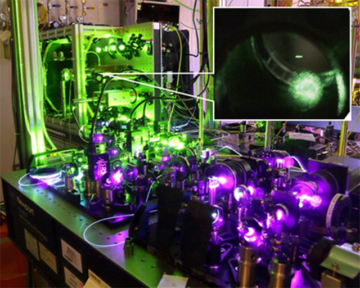
In a recent collaborative effort, researchers from Quantinuum, the University of Texas, and Princeton University have taken a significant step in using these machines. In a new Nature Physics paper, the team simulated a complex process known as a non-equilibrium phase transition. To put it in simpler terms, imagine understanding the intricate details of how water changes states—except the process studied is even more complex!
Diving Deeper into Non-Equilibrium Phase Transitions
Quantum systems exhibit unique non-equilibrium phenomena, especially when influenced by dissipation and external disturbances. Non-equilibrium phase transitions happen when a quantum system is influenced by energy loss or other external fluctuations.
These non-equilibrium phase transition behaviors are essential to understanding various scientific fields like condensed matter (the study of solids and liquids), quantum optics (interaction of light with quantum systems), precision measurement techniques, and even quantum error correction. However, studying these systems has been quite a challenge, mainly because the traditional tools we’ve used so far, like those from statistical mechanics, don’t quite cut it. Moreover, simulating these complex behaviors on our standard computers becomes increasingly difficult.
This study focused on simulating a quantum system, which is an extension of a classical process known to describe certain atomic behaviors. What makes this research stand out is the scale and precision of the simulation. The team employed advanced techniques to carry out the simulation on large instances of the non-equilibrium phase transition model, incorporating up to 73 sites and 72 circuit layers.
The findings from this study are promising. While our current computers can still replicate the results, the quantum computer showed potential for much more efficient and accurate simulations. This means that, as quantum technology advances, we might soon have machines that can tackle problems beyond the reach of today’s computers.
This research isn’t just a tech achievement; it’s crucial for various fields. The implications are vast, from understanding the materials that make up our everyday products to enhancing the precision of scientific instruments.
The team is now gearing up to delve deeper. They’re working on minimizing errors in their quantum computations and taking on more complex simulations.
Kenna Hughes-Castleberry is a staff writer at Inside Quantum Technology and the Science Communicator at JILA (a partnership between the University of Colorado Boulder and NIST). Her writing beats include deep tech, quantum computing, and AI. Her work has been featured in Scientific American, New Scientist, Discover Magazine, Ars Technica, and more.
- SEO Powered Content & PR Distribution. Get Amplified Today.
- PlatoData.Network Vertical Generative Ai. Empower Yourself. Access Here.
- PlatoAiStream. Web3 Intelligence. Knowledge Amplified. Access Here.
- PlatoESG. Carbon, CleanTech, Energy, Environment, Solar, Waste Management. Access Here.
- PlatoHealth. Biotech and Clinical Trials Intelligence. Access Here.
- Source: https://www.insidequantumtechnology.com/news-archive/a-new-study-suggests-quantum-computers-show-promise-in-simulating-non-equilibrium-phase-transitions/
- :has
- :is
- $UP
- 2023
- 72
- 73
- a
- accurate
- achievement
- advanced
- advances
- AI
- American
- an
- and
- ARE
- AS
- At
- because
- becomes
- been
- behaviors
- between
- Beyond
- by
- CAN
- carry
- certain
- challenge
- Changes
- collaborative
- Colorado
- complex
- computations
- computer
- computers
- computing
- Condensed matter
- crucial
- Current
- Cut
- deep
- deep tech
- deeper
- delve
- describe
- details
- difficult
- discover
- Dont
- efficient
- effort
- employed
- energy
- enhancing
- error
- Errors
- especially
- essential
- Ether (ETH)
- Even
- everyday
- exhibit
- extension
- external
- far
- featured
- Fields
- findings
- fluctuations
- focused
- For
- from
- gearing
- happen
- Have
- her
- High
- How
- However
- HTTPS
- image
- imagine
- implications
- in
- include
- incorporating
- increasingly
- influenced
- inside
- Inside Quantum Technology
- instances
- instruments
- interaction
- into
- intricate
- IT
- jpg
- just
- known
- large
- layers
- light
- like
- loss
- Machines
- magazine
- mainly
- make
- MAKES
- materials
- Matter
- max-width
- means
- measurement
- mechanics
- might
- minimizing
- model
- more
- more efficient
- Moreover
- much
- Nature
- New
- nist
- nov
- now
- of
- on
- optics
- or
- Other
- our
- out
- Partnership
- phase
- Physics
- plato
- Plato Data Intelligence
- PlatoData
- posted
- potential
- Precision
- princeton
- problems
- process
- Products
- promise
- promising
- put
- Quantinuum
- Quantum
- Quantum Computer
- quantum computers
- quantum computing
- quantum error correction
- Quantum optics
- quantum systems
- quantum technology
- quite
- reach
- recent
- research
- researchers
- Results
- Scale
- Science
- scientific
- Scientist
- show
- showed
- significant
- simpler
- simulation
- simulations
- Sites
- So
- so Far
- Soon
- Staff
- staff writer
- stand
- standard
- statistical
- Step
- Still
- studied
- Study
- Studying
- subject
- Suggests
- system
- Systems
- tackle
- taken
- taking
- team
- tech
- techniques
- Technology
- terms
- texas
- that
- The
- their
- These
- this
- those
- to
- today’s
- tools
- traditional
- transition
- transitions
- true
- understanding
- unique
- university
- used
- using
- various
- Vast
- Water
- we
- were
- What
- when
- which
- while
- with
- Work
- working
- writer
- writing
- zephyrnet












